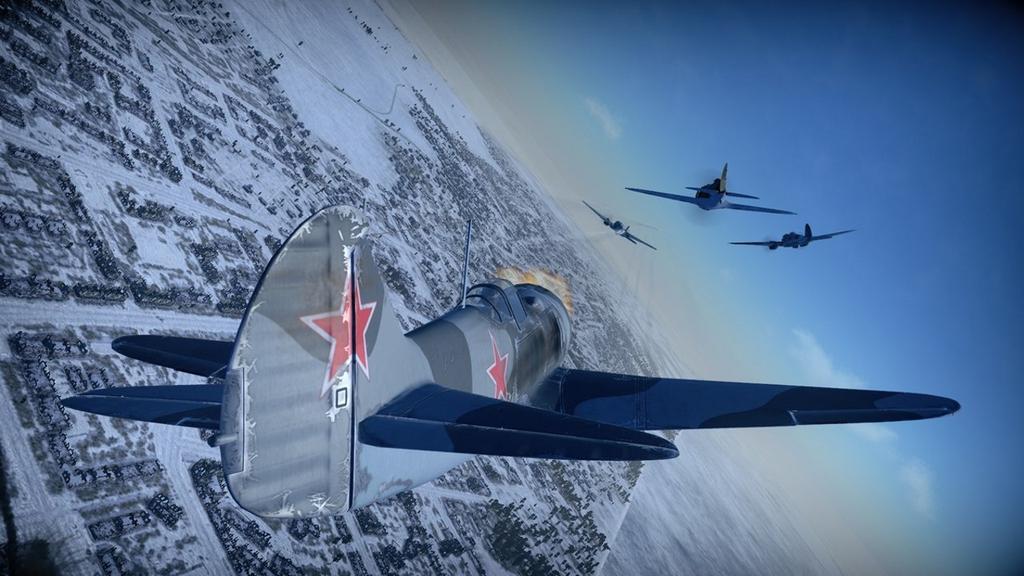
The sense of speed is excellent and, because the ground isn't some painted-on facade, you can really get down low and feel it.

They impress at high altitude and low too streaking across the deck at tree level in cockpit view seems one of the best ways to appreciate this game. Gaijin claims the game's locations are exact copies of the terrain during the Second World War and "players will appreciate not only the absolute realism thanks to satellite photography, but also the authentic historical component, which became possible with the use of maps used by commanders of the participating countries of WWII, urban landscape photos, and military installations of the time, as well as text descriptions of the terrain and strategically important facilities." I can't personally say I know what the Ruhr or Port Moresby (or any of the game's other locations, for that matter) looked like from the air circa 1944, but the sprawling environments of Birds of Steel do ooze a certain authenticity about them. Attention to detail is something I can appreciate in any game genre and Moscow-based outfit Gaijin Entertainment, the studio behind Birds of Steel, have certainly over-delivered on detail.

It's certainly food-for-thought as I sit, slouched in front of an office TV, almost three-quarters-of-a-century later. I'm flying over it, right now, impressed at the incredibly detailed tapestry of fields and pockets of forest that blanket the ground. My great uncle was a pilot in 463 Squadron until, at 21 years old, he and his crew were killed in action during a raid on the Dortmund-Ems Canal in November 1944. In proportion to its size, 463 Squadron sustained the highest loss rate of any of the Australian bomber squadrons.

463 Squadron of the Royal Australian Air Force, which flew heavy bombers out of England as part of the RAF's Bomber Command during WWII. That manmade channel is the Dortmund-Ems Canal and I know of someone who was here, 67 years ago, in the air above it.


 0 kommentar(er)
0 kommentar(er)
